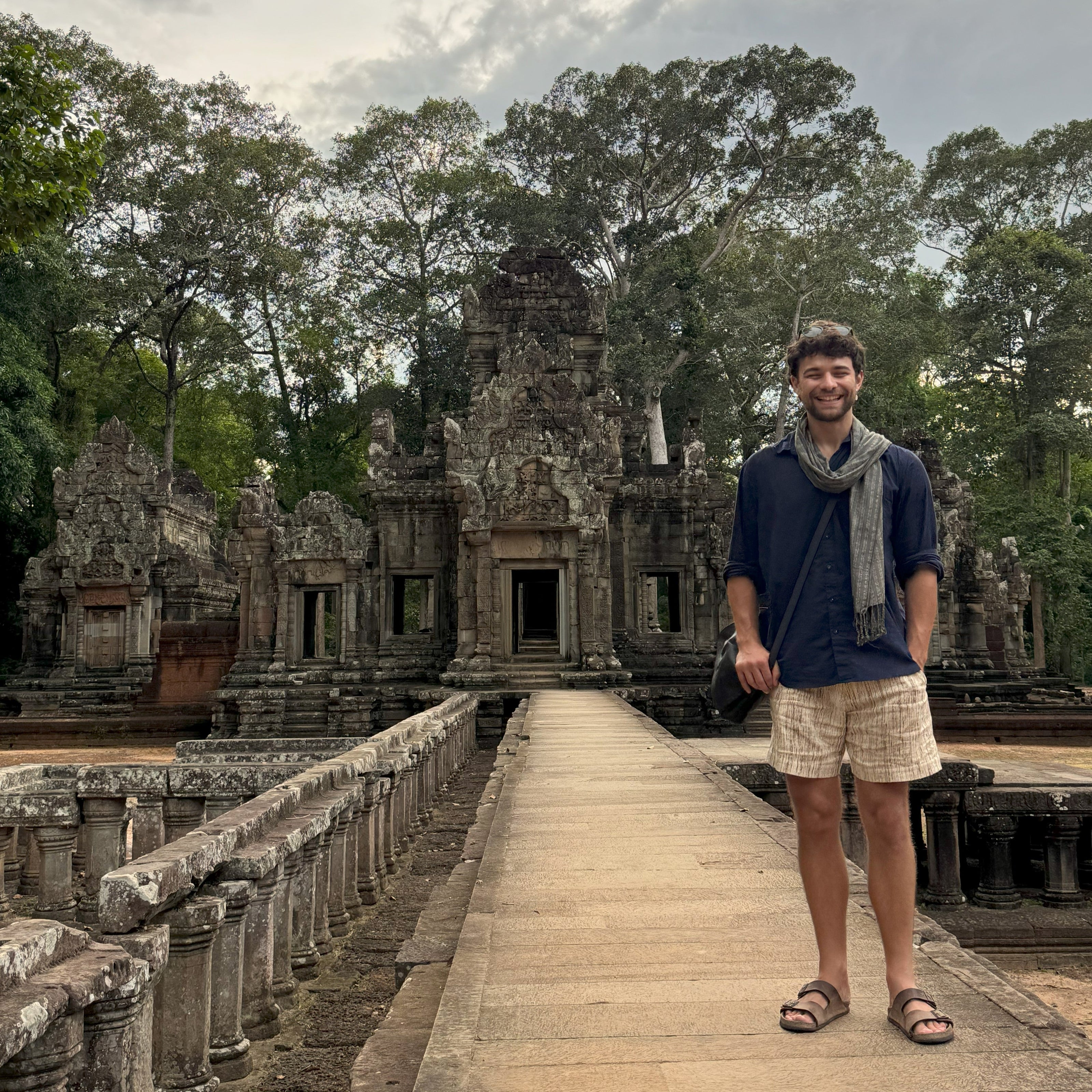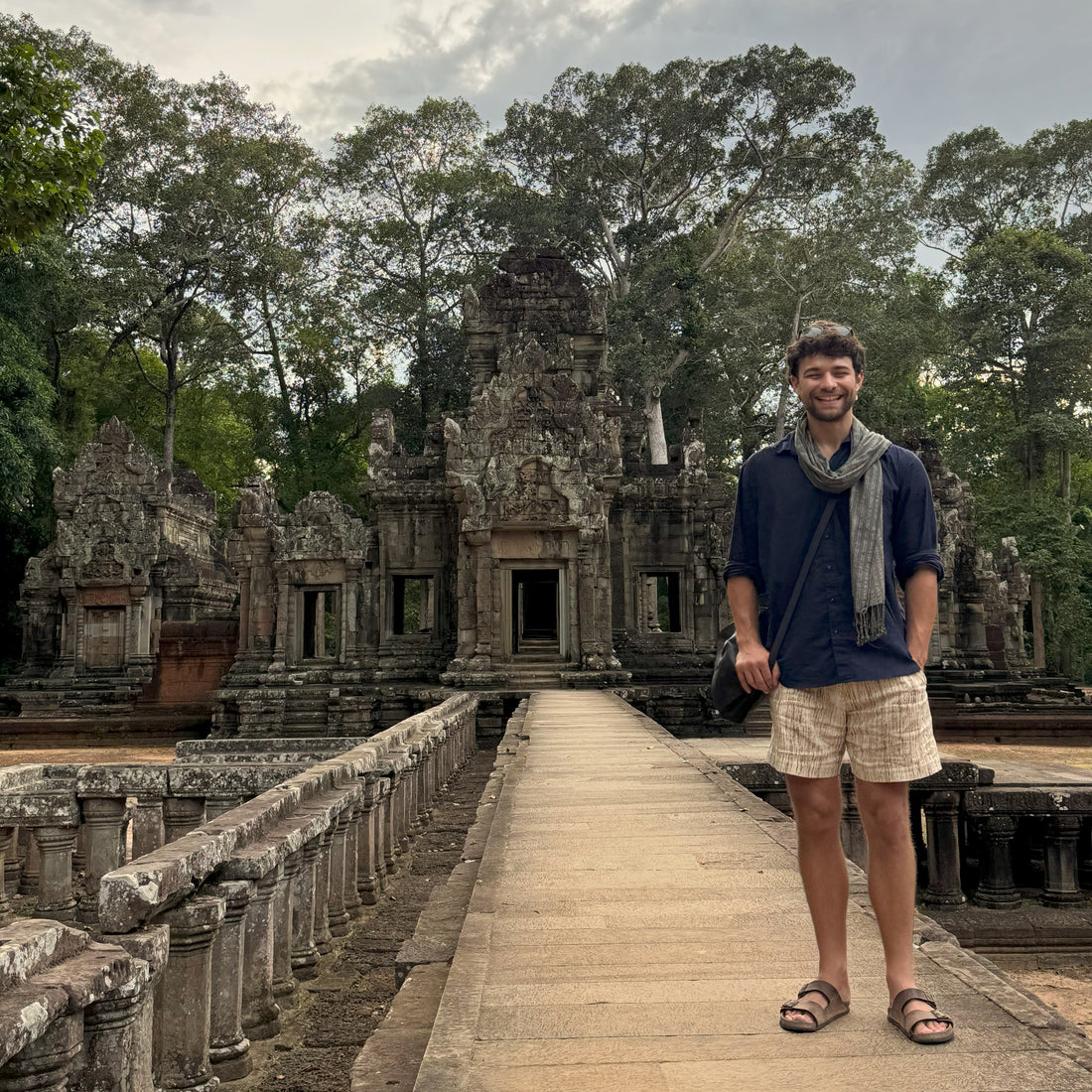Since the last update, I went on many adventures. I explored almost all the temples around Siem Reap and discovered many secrets. A thousand years ago, the Khmer Empire in Cambodia had a golden age. The rulers used the majority of their wealth to build Angkor, whose name literally translates to "the capital city". And the main structure in the city is called Angkor Wat, which means "the city of temples". The place lives up to its name to this day; most secular buildings have fallen into ruin, but the sacred houses of gods still stand.

Angkor is the biggest pre-industrial city in the world, and among the most populous ones, on par with ancient Rome. But since ancient Cambodians believed stone is sacred and reserved only for the gods, we can't admire Angkor's grandeur as much today. Even aristocrats and emperors lived in wooden buildings that have been digested by the hot, humid Cambodian forests a long time ago.
Angkor's Beauty

The photo above is of the entrance to Angkor Wat, the main temple. Lines of tourists and local pilgrims flood through the gates every day. Long ago this was a Hindu temple dedicated to Vishnu, the god that sustains the Universe, but since then Buddhism became the majority religion in Cambodia, transforming the religion and philosophy of the region. Now, almost every room in the temple has a statue of Buddha, and you can see one such statue in silver in the photo below.


In the photo above, you see the famous scene from an ancient Vedic myth. The asuras (demons) and devas (gods) are pulling the body of a giant snake. This shows the story called the Churning of the Ocean of Milk.
In the story, gods and demons worked together to pull the snake, which was wrapped around a mountain. They wanted to stir the ocean and create the nectar of immortality using the same method you would when creating butter. It’s a tale of opposite forces working together to create life. There is no explicit good or wrong, we have to incorporate everything to understand pure spirituality.

The photo above shows temple towers with human faces on all four sides. Do you see them? The faces are all blissful and calm, representing joyous, positive universal energies that are meant to spread in all directions of the world. Temples in Angkor are full of these faces.


The Beach
Siem Reap, where I live for now, is a bit further from the sea, but they have a wonderful lake right next to the city. The locals have built a series of gazebos that you can use for free. Each one is full of hammocks that imitate tired souls with their heavy, hanging fabrics. I was reading a wonderful book and enjoying the Cambodian sun from the protection of the shade.



I have to share I am incredibly happy I finally found second-hand Dune books in Asia. I have been searching for these for the last six months, and here they are, in good condition. I found the books unexpectedly in a restaurant I deliberately visited just to eat the favorite dish of a writer whose podcast I listen to all the time. The dish in question is Chilli con Carne, and the writer is Dan Wells. But his co-host is Brandon Sanderson, and his favorite book of all time is Dune. This must be some sort of synchronicity.
The City
The reason I came to Siem Reap is partly to train jiujutsu, however, I got injured. But I still made a bit of progress on my journey, mentally. I recently found out that Siem Reap literally means "Thailand defeated". It’s clear this is a martial city built on the foundations of planet Mars' energy. So I am now convinced I came to the right place to practice martial arts. If only Mars would stop turning against me.
In the photo below you will see a cat. At first glance it looks ordinary, until you notice the crooked tail. And this isn't an exception, every cat in Siem Reap has this short, crooked tail. When I first saw this phenomenon, I thought people here had a habit of violence against cats, damaging and breaking their tails and letting them heal at a weird angle. But the truth runs deeper, and it touches on every South Asian culture. Apparently, the people here consider "kinked tails" lucky (I did my research and that is their official name). Over many generations, most likely over 2000 years, they have adopted kinked tail cats, fed them more, kept them from an unwanted litter, etc. Basically a form of selective breeding, because I can't call something with so much human influence "natural selection". And now, every cat has a crooked tail. What is the kinked tail of your culture? A part of nature or environment people changed not because of practical reasons, but arbitrary folk beliefs.



